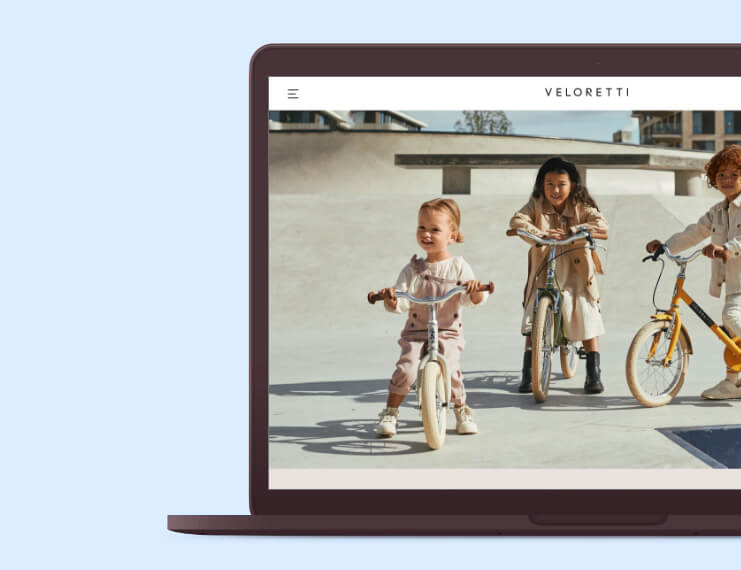Customized spaghetti
What went wrong? In hindsight, Christiaan has a hypothesis. Like many webshops, in its early days, Rosefield Watches ran on the open source platform Magento 1. Back then open source was still the standard in e-commerce platforms, at least in the Netherlands: Shopify already existed, but it was focused on Northern America.
Open source e-commerce platforms such as Magento and WooCommerce are known for their adaptability: the customization options are endless. However, this is also thé big disadvantage of this type of platform. Every functional addition to your website makes the whole more unstable. Hence, you need experienced developers to make sure this is done well.
“In principle, Magento is as good a platform as any,” says Christiaan; “but as a young brand, you often don’t have the means to have your website built by a Magento specialist - who will make sure to set up your store according to Magento best practices. So it happens that at a later point when you want to improve and scale your business, you inevitably run into structural errors that you need to work around all the time.”
Until you arrive at the point where you can hardly change anything anymore without breaking things because it’s all intertwined. In Christiaan’s words: “Too much customization is a flaw. It becomes spaghetti.”. When you’ve reached that point, your business is being held hostage by your platform. Christiaan: “To get the functionality you need, you start doing things with the platform that it was never designed for. Your life is completely dictated by it, you keep spending tons of energy on it, and the costs keep soaring.”
Migrate: but where?
After Black Friday 2018 Christiaan went looking for another platform. He considered moving to Magento 2, the completely renewed successor to Magento 1. Because at that time Magento had already announced the end of life for Magento 1, he knew that a platform migration was inevitable for Rosefield anyway. But did he want to continue with open source, and with Magento?
Because of his bad experiences Christiaan decided to look for other options as well. What were other brands in his market using? The sites of Gymshark and MVMT Watches caught his attention, both on Shopify Plus. When he learned that a substantial percentage of US webshops ran on Shopify, both small and really big brands such as Tesla, Redbull en Sephora, he invited a few development agencies over to discuss his options.
“By then I had a strong preference for something that was simple, modular and scalable. A solution that took care of all the core processes in such a way that I didn’t have to check everything. I already have a million things to manage, those basic things should just run smoothly in the background. Stuff such as hosting – as an entrepreneur you shouldn’t even have to think about it.”

The pros and cons of Shopify
With this wishlist a SaaS solution like Shopify became a viable option. During the pitch phase Code's presentation immediately drew Christiaan’s attention: “Bob’s first slide was a list of reasons why we should NOT want Shopify: revenue sharing, the rather limited possibilities regarding multi-currency and multi-language functionality, and a checkout you cannot customize.”
Bob’s next few slides made clear why replatforming to Shopify would nonetheless be a sensible choice for Rosefield. With the end of life of Magento 1 drawing nearer, a platform change was coming anyway – and the stability, scalability and agile setup of Shopify matched very well with Christiaan’s wishes. What’s more, even with the mandatory revenue share Rosefield would be spending a lot less with Shopify: no hosting fees, no hassle with upgrades and security anymore, much less need for developers, and a considerably shorter setup phase.
The pricing model of SaaS software, which takes a percentage of a site’s revenue, was never a big obstacle for Christiaan. “You don’t have that with Magento, no, but with them setup is very expensive and it costs a lot of time and money to maintain.”
Shopify struck him as a much more modern solution. “It is abetter fit for current ways of thinking - your cost adapts to your revenue. The deal is: Shopify keeps a bit of your revenue, and in exchange you get a high-quality platform that doesn’t require much attention. And doesn’t force huge developers’ invoices on you.” Compromising a bit on flexibility was a conscious choice. “In the Shopify checkout there isn’t much room for customization, compared to Magento. And when you have multiple storefronts it feels quite inefficient that you can’t manage all your content in one place. But the really important stuff is very well taken care of.”
Christiaan’s prognosis
As we speak Rosefield has been running on Shopify Plus for a while, to their great satisfaction. Which is not to say Christiaan doesn’t see room for improvement, but his prognosis is that Shopify is aware of it too - and very likely to make important moves in the near future. Especially now that they are focusing more and more on the European market. “When I look at what Shopify sets out to do the coming period and what’s in the development pipeline, I’m thinking: as a company, you can’t outrun them. They are the specialists and they move a lot faster than you. To me, it looks like a very future-proof platform.”
Bob and Christiaan delivered a talk about the Rosefield case at the Webwinkel Vakdagen 2020 (Holland’s biggest e-commerce tradeshow): read a Dutch summary of their talk here.







